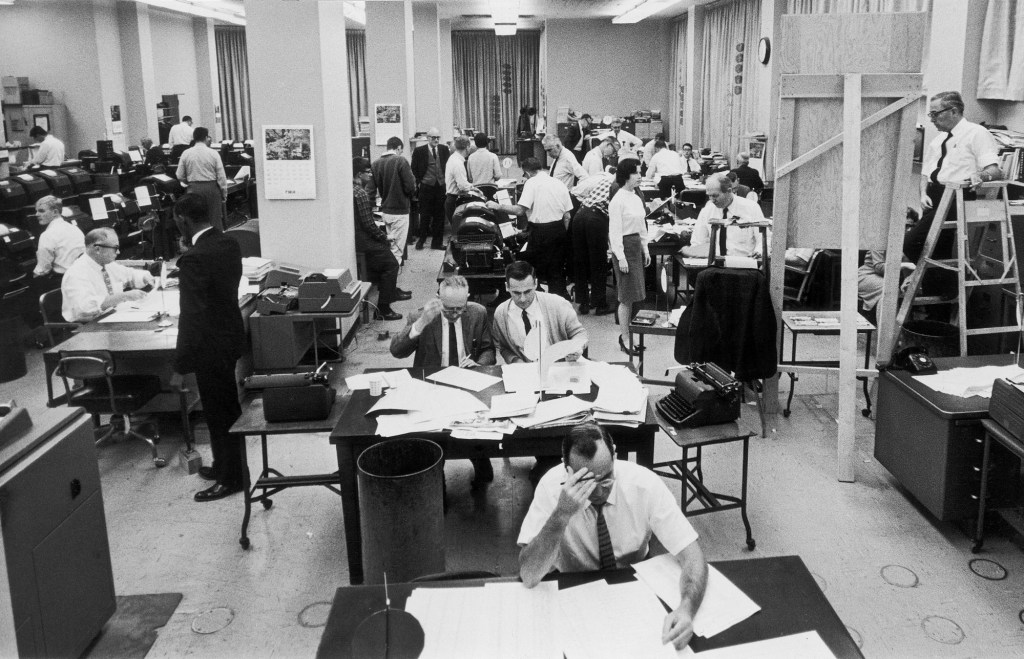By MAYA SWEEDLER
WASHINGTON (AP) — There isn’t an easier way to count votes than to count the votes.
The Associated Press has been tallying results in national, state and local elections since 1848. In broad terms, the process is the same today as it was then: Vote count reporters collect election results at a local level as soon as polls close, then submit those results for the AP to collate, verify and report.
This year, AP will count the votes in about 5,000 contested races around the United States, from the presidency and Congress to state legislatures and ballot measures.
The U.S. doesn’t have a nationwide body that collects and releases election results. Elections are administered locally, by thousands of offices, following standards set by the states. In many cases, the states themselves don’t even offer up-to-date tracking of election results.
The AP plays a role in collecting and standardizing the results.
The AP’s vote count fills a gap by bringing together information that otherwise might not be available online for days or weeks after an election or is scattered across hundreds of local websites. Without national standards or consistent expectations across states, it also ensures the data is in a standard format, uses standard terms and undergoes rigorous quality control.
-
FILE – Associated Press journalists David Espo, bureau chief Jonathan Wolman and Walter Mears work on Election Day, November 1992, in Washington. (AP Photo, File)
-

FILE – Then-Associated Press Washington bureau chief Sally Buzbee, talks with Stephen Ohlemacher, who in 2020 is the decision desk editor, in the early morning hours of Wednesday, Nov. 9, 2016, at the Washington bureau of The Associated Press during election night. (AP Photo/Jon Elswick, File)
-

FILE – Associated Press Washington Bureau Chief Julie Pace, left, talks with Stephen Ohlemacher, right, on election night at the Washington bureau of The Associated Press, Tuesday, Nov. 3, 2020. (AP Photo/Pablo Martinez Monsivais, File)
1 of 3
FILE – Associated Press journalists David Espo, bureau chief Jonathan Wolman and Walter Mears work on Election Day, November 1992, in Washington. (AP Photo, File)
Expand
Data collection efforts begin when Americans start voting, which in almost every race means well before Nov. 5 this year.
The AP requests information from state and local election administrators about the number of absentee ballots requested and the number of early votes cast as soon as voting begins. (You can track those numbers here.) These figures don’t contain results, which aren’t released until after polls close, but they can provide valuable insights into the people who have voted by Election Day.
The big effort begins once polls close, when approximately 4,000 AP vote count reporters fan out across voting precincts and county election offices. An AP vote count reporter will be stationed at nearly every county election office on Election Day, as well as in key cities and towns, collecting data straight from the source.
Many vote count reporters have a substantial amount of experience collecting accurate vote count information for the AP. In the most recent general election, about half of them had worked for the AP for at least 10 years. Hundreds more have experience collecting vote count data in primary and general elections.
They work with local election officials to collect results directly from counties or precincts where they are first counted and collected and submit them, by phone or electronically, as soon as they’re available. The results are transmitted to the AP’s vote entry center, which employs an additional 800 to 900 people.
Because many states and counties display election results on websites, the AP monitors those sites and enters the results into the same system. The vote entry center also takes in feeds of results directly from election officials where they are provided, and uses automated tools to collect results from official government websites.
In many cases, counties will report more votes as they count ballots throughout the night. The AP is continuously updating its count as these results are released. In a general election, the AP will make as many as 21,000 race updates per hour.
Mistakes can happen, such as test data accidentally getting published on a state’s website or a stringer accidentally transposing two candidates’ vote totals. Having multiple sources helps the AP figure out where these mistakes happen and often prevents them from getting published.
Sometimes counting errors need to be corrected, such as when a county has made a correction to its data or someone accidentally entered an extra zero. In some cases, that can lead to a drop in the total number of votes counted when the problem is identified and fixed.
This is why it helps to have multiple sources of updates.
On general election nights, the AP can have up to five or six potential sources of election results in each county and can choose between them depending on which is most up-to-date and accurate. Those multiple sources don’t just serve as a backup to each other; they also provide a check to help ensure the vote totals reported are correct.
Read more about how U.S. elections work at Explaining Election 2024, a series from The Associated Press aimed at helping make sense of the American democracy. The AP receives support from several private foundations to enhance its explanatory coverage of elections and democracy. See more about AP’s democracy initiative here. The AP is solely responsible for all content.


















































